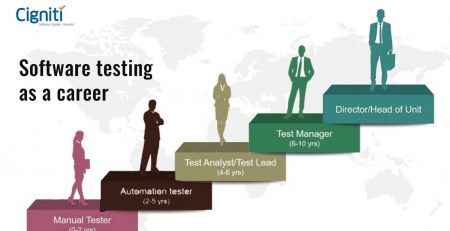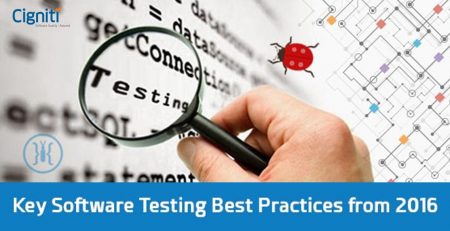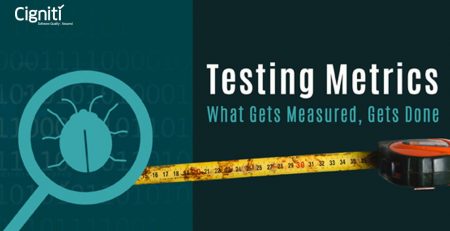Top 8 Things To Consider When Transforming To Agile Testing
|
Listen on the go!
|
In the traditional waterfall methodology of software development, the process starts with detailed requirement gathering, and moves from design phase to final development, wherein test planning and execution comes in the last phase. The testing team verifies the requirement and design documents while performing the functional and non-functional testing. Generally, during the last stage of software development, the client expects the final build just after the test cycle is completed and any requirement mismatch or bug in the product can create complications and delays. In order to mitigate and overcome these challenges, project managers are moving towards the Agile process.
The Agile development processes focus on continuous improvements and flexibility with shorter development cycles. Agile methodology is adopted in the projects wherein the requirements and solutions are in evolution stage and need a collaborative effort within the team to develop the solution. Agile development not only impacts the testing processes, but also the teams involved in the project. The traditional testing methods are no longer feasible and have to be blended with Agile methodology.
This requires traditional QA testing teams to be restructured and revived to survive the Agile transformation. The teams must adopt certain basic steps to evolve into Agile QA teams.
- Hire a Team with the Right Attitude: This is a critical aspect of establishing a testing team that gels well without having ego-hassles and has good soft-skills, much required in an Agile environment.
- Adopt the Agile testing approach: The traditional testing methodology has to be modified to shorter testing cycles with quick feedbacks, instead of long cycles of traditional comprehensive testing. The short cycles are all about being exploratory in behavior. Each testing cycle includes:
- Tech tests: Testing the core functionalities and features of the solution along with compatibility, scalability, and maintainability aspects in case of product enhancements and new versions.
- Business tests: Testing the functional aspects of the solution; whether the product is able to satisfy and solve the business concerns and requirements. A major testing criterion is whether the product is able to handle the unexpected real-life deployment concerns. As the entire project team is involved, the risks of missing any business workflow, any change requests by the client, limitations of technology or functionality, etc. can be discussed and resolved.
- Continuous communication among teams: The development and QA teams need to discuss their issues and concerns to work together and develop a solution as per client’s requirements. The traditional teams have to be merged and amalgamated to create a unified team working towards the common goal of on-time project delivery. The daily stand-up and fortnightly meetings help teams to discuss what went well, or otherwise, how to improve the testing approach and reduce the time involved, etc. This not just helps identify problems on time, but also helps the teams synergize their efforts in the right direction with expected outcomes.
- Involve automation: The Agile environment requires constant and quick testing and cannot rely on the manual testing approach. The teams need to be equipped with latest automation tools to implement automation testing. They should be able to experiment and convert manual tasks into automated scripts for testing.
- Merge and collaborate the development and testing teams: As Agile development has shorter development cycles and the requirements are continuously evolving, it becomes difficult for QA teams to follow the traditional approach. They cannot wait for the development team to create a module and share for testing. The modules are progressing on a regular basis and the testers do not have ample time to test the solutions in phases. It is no longer about traditional hierarchy but more about the collaboration amongst teams, wherein each member takes ownership and responsibility for their tasks.
- Measure the effectiveness: To understand that you are on the right path, it is a must to measure the success of Agile implementation. To measure and track metrics, organizations can use the “inspect and adapt” Agile concept, or the Build-Measure-Learn concept (of the Lean startup method). It is these metrics that highlight areas of improvement for your next iteration and will definitely take you on the right path! It is critical that you continuously keep tracking the same.
- Review documentation practices: Generally, the requirement documentation acts as the ultimate authority in the traditional testing process, whereas in Agile testing it acts as a framework. The prompt feedback results in product modifications; as a result, the initial documentation becomes stale. The QA team needs to keep the documentation updated with the latest changes to avoid discrepancies and confusions at the time of final product deployment.
- Simulate small low- risk projects: The teams can learn and work on Agile testing by conducting tests on small projects to familiarize and restyle their testing approach to Agile testing. Let the change happen gradually – sudden changes often lead to losses!
Conclusion
Cigniti has been a trusted testing partner for many organizations in various stages of adopting Agile. We have helped organizations new to Agile build in QA planning, estimation, metrics into their sprints. In case of more mature organizations, we have seamlessly integrated with their sprint teams to improve test coverage, velocity, and quality. Our frameworks for continuous test automation and performance testing have been leveraged by multiple organizations to improve their Quality Assurance and Testing practices.
Cigniti has successfully supported variants of Agile, be it Scrum, ATDD, BDD etc. With larger organizations, we have helped scale Agile using frameworks like SAFe, SoS etc. While Agile works best with a collocated model, we have also leveraged our Distributed Agile Testing Framework to support a global delivery model.
While Cigniti’s approach takes care of “quality and timeliness”, governance and communication are also primary concerns of clients adopting agile methodology. To overcome this, Cigniti has built a lean governance model that provides “right-level of information to right-stakeholders at the right time”. Cigniti has institutionalized metrics and measurement framework to track and monitor sprint velocity, burn rate, backlogs, sprint retro trends et al that provides performance visibility and confidence to all stakeholders (Dev, BAs, QA, Infra and Exec Team) for release readiness.
Consult our experienced team of career testers for your Testing requirements.





Leave a Reply